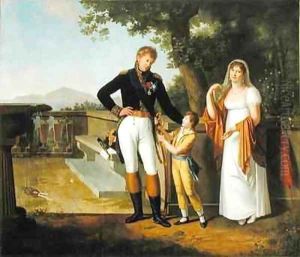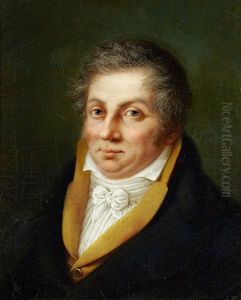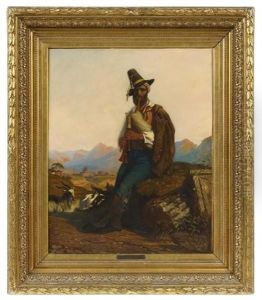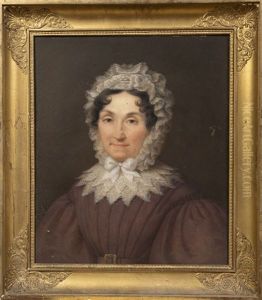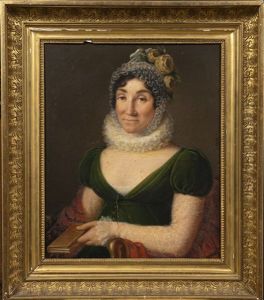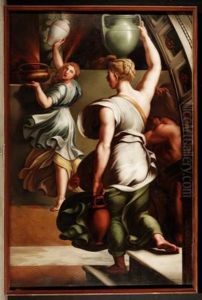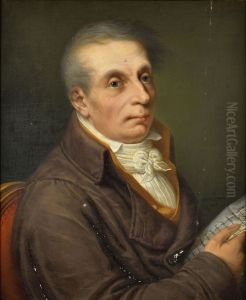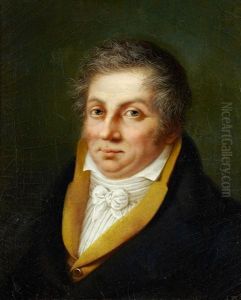Guillaume Descamps Paintings
Guillaume Descamps, born in 1779 in Lille, France, was a multifaceted artist known for his skills as a painter, engraver, and art dealer. His work and influence spanned the early to mid-19th century, a period marked by significant political and social changes in France and across Europe. Descamps' early life and education in the arts were deeply rooted in the rich cultural atmosphere of Lille, a city known for its artistic heritage and vibrant academic community.
Descamps' artistic journey began under the tutelage of local masters, where he honed his skills in both painting and engraving. His talent was evident early on, leading him to move to Paris, the heart of the French art world, to further his career. In Paris, Descamps immersed himself in the thriving artistic community, drawing inspiration from contemporaries and the masters of the past. His work often reflected a keen observation of social and natural landscapes, embodying the romantic spirit of the era while also hinting at the realism that would come to dominate the latter half of the 19th century.
Throughout his career, Descamps exhibited his work at various salons and galleries, gaining recognition for his detailed engravings and atmospheric paintings. His engravings, in particular, were noted for their precision and depth, bringing to life the pages of books and journals, and making art accessible to a broader audience. As an art dealer, Descamps played a pivotal role in the circulation of artworks, nurturing the careers of young artists and contributing to the vibrant cultural exchange that characterized the Parisian art scene.
Descamps' legacy is not only in his own creations but also in his influence on the art world through his support of emerging talent and his role in the art market. His work remains a testament to the rich artistic fervor of early 19th-century France, bridging the gap between the romantic and realist movements. Guillaume Descamps passed away in 1858, leaving behind a body of work that continues to be studied and admired for its contribution to the history of French art.
